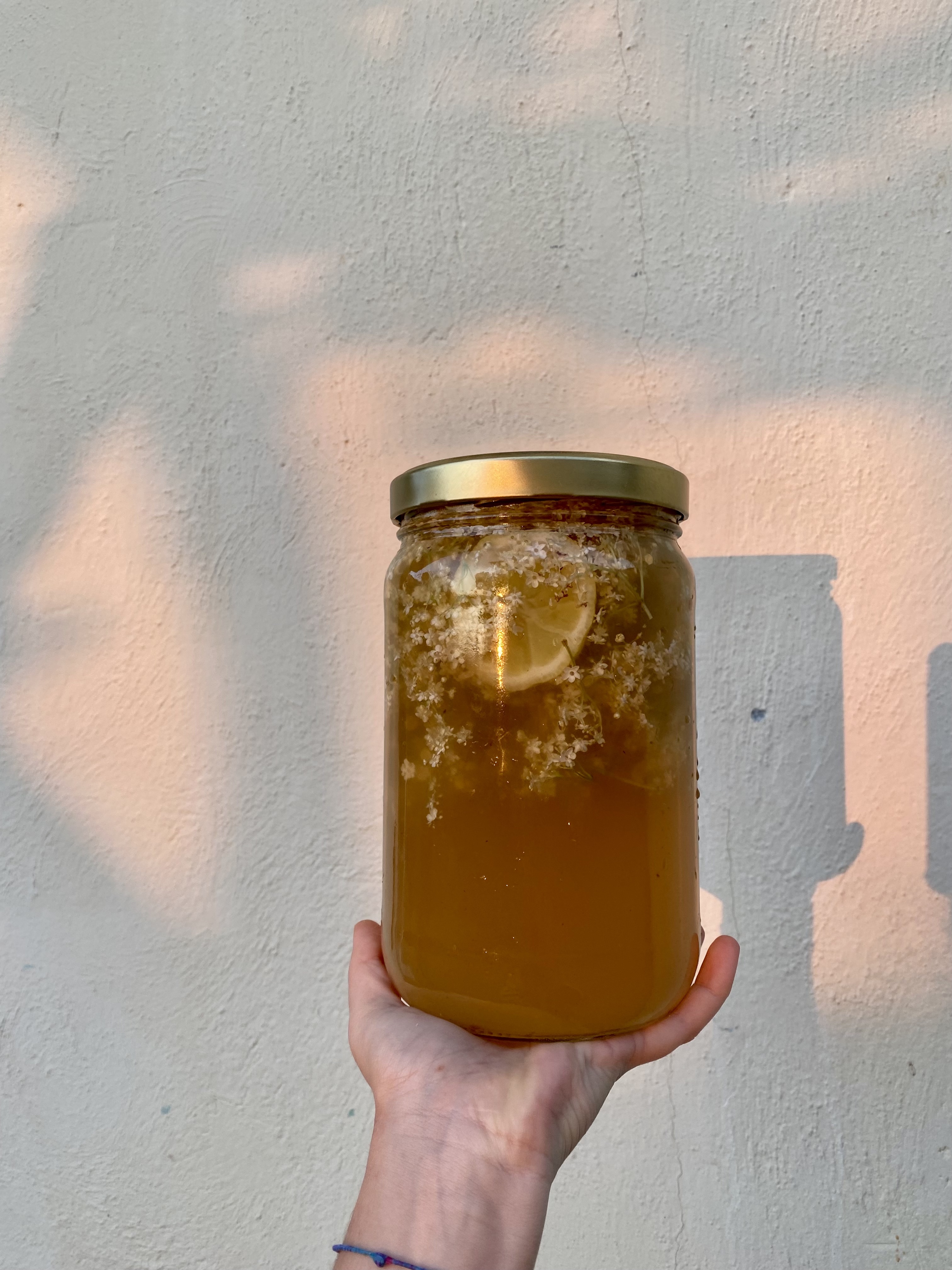GLUTEN FREE – NUT FREE
Fairy champagne or elderflower wild-fermented soda, is a delicious drink, full of probiotics for a healthy gut, and a happy spring mind.



This recipe isn’t fully mine but is a slightly different version of a recipe that comes from a book my mom got me and my sisters when we were kids. It’s quite a special one, with recipes that include foraged wild ingredients and beautiful illustrations. Most of the recipes come with curious names too, such as “blu salad” which includes mallow and borage flowers, or “elf ears” being little sweet pastry pockets full of wild medlar and apples, and “brigand canapes” with garlic mustard leaves butter.
Not to mention the beverages such as “solar tea” with primroses, “gnome aperitif” with linden leaves and raspberry syrup, and lastly “fairy champagne”.
This one as Fennel and turmeric sourkrauts or as my sage and garlic cashew spread is a wild fermentation, meaning is a spontaneous fermentation that relies on organisms already present in the ingredients used and the environment.
Bacteria are what keep us alive and well. They are present both in our bodies and in all that surrounds us, being incredibly useful for humans. Fermented foods, in particular, are part of what keep the bacteria in our gut alive promoting a strong digestive fire and an active immune system.
Ingredients
4 l fresh water
10 -12 elderflower hats
2 tbsp apple cider vinegar
4 lemons
300g sugar
Method
Wash the flowers under running water to remove spiders and little insects. Juice the lemons then in a big carboy add water, sugar, vinegar and the juice of the lemons squeezed and the lemons halves. Dissolve the sugar then lastly add the flowers cutting as much stem as possible with scissors or your hands.
Give it a mix, close loosely with a lid, and let it macerate somewhere in your kitchen for 3 to 5 days.
When ready drain the liquid into bottles using a fine strain and a piece of thin fabric or cheesecloth to avoid any flowers or bits to enter the bottles.
Close very tightly with a lid and transfer to a dark space in your kitchen. A cupboard works well. Let it ferment for 2 to 3 weeks before opening it.